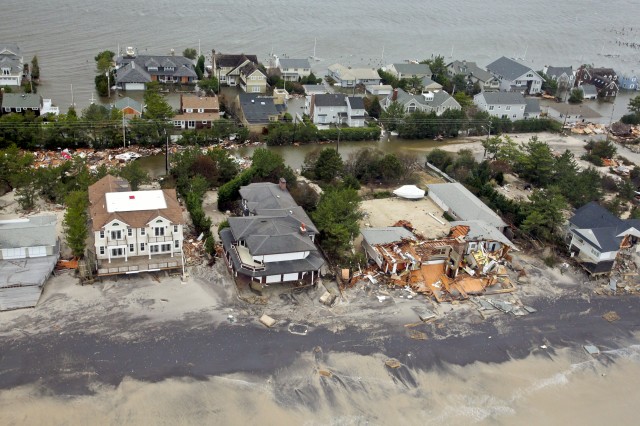Sandy-like storms not projected to become more common
Ars Technica » Scientific Method 2013-09-04

Sandy was a bizarre and devastating storm. But is it something we can expect to see more often as the climate warms? That’s the (more than) $50 billion question.
Pinning down future hurricane behavior has proved difficult, but the evidence currently indicates (maybe) fewer but (likely) larger hurricanes. It wasn’t Sandy’s size that made it so unusual though. There was a reason we had to start inventing names like “superstorm” to replace “hurricane”—Sandy left the tropics but then veered landward instead of spinning off into the Atlantic. Atmospheric circulation normally guides these storms to the east, but a stubborn high pressure zone parked in the Atlantic blocked the way.
There have been a few of these “blocking highs” that garnered attention recently, including one that caused the 2010 Russian heat wave and was partly responsible for disastrous flooding in Pakistan. Some research has indicated these extreme events are already increasingly common as a result of climate change, though this is still debated. It’s been suggested that, in particular, frequent blocking highs could be a result of the warming in the Arctic. If this is the case, perhaps the freak conditions that made Sandy into a “superstorm” could appear more often.
Read 7 remaining paragraphs | Comments




